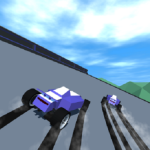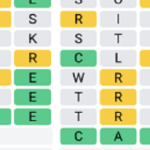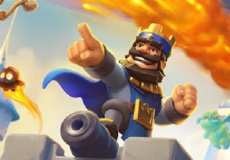
Track & Field
Advertisement
Track And Field is an old-school arcade game that transforms athletic competition into a series of fast, skill-based challenges. It presents players with a lineup of sports events, each requiring rapid inputs and split-second decisions. Unlike modern sports simulations, this game simplifies the experience to pure mechanics—running, jumping, and throwing—using only a few buttons. Despite this simplicity, it manages to capture the tension and excitement of athletic performance in a way that’s both accessible and addictive.
Advertisement
Similiar games
Track And Field is an old-school arcade game that transforms athletic competition into a series of fast, skill-based challenges. It presents players with a lineup of sports events, each requiring rapid inputs and split-second decisions. Unlike modern sports simulations, this game simplifies the experience to pure mechanics—running, jumping, and throwing—using only a few buttons. Despite this simplicity, it manages to capture the tension and excitement of athletic performance in a way that’s both accessible and addictive.
Event Variety and Player Timing
The game splits the Olympic theme into short, focused events. Players must rapidly tap buttons to gain speed, then act at the right moment to clear a hurdle, launch a javelin, or leap into the sand. Each sport has different timing demands, so learning when to act becomes as important as how fast you move. There’s no room for delay—every action needs to be timed with precision to meet the qualifying mark and proceed to the next event.
Core Events Featured in the Game
· 100 meter dash, testing raw button speed
· Long jump, combining timing and momentum
· Javelin throw, requiring accuracy in angle and release
· Hurdles, balancing speed and jump coordination
· Hammer throw, demanding precise spinning and launch
· High jump, where height depends on flawless execution
Arcade Roots and Replay Motivation
Originally built for arcade machines, Track And Field was made to challenge players in short bursts. Lives were limited, progress was reset quickly, and the main goal was always improvement. Whether alone or playing with friends, each round becomes a test of muscle memory and consistency. The competitive structure, with qualifying scores and escalating difficulty, keeps players coming back to sharpen their performance or beat previous records.
Track And Field continues to be remembered not for complexity, but for intensity. Its design strips away anything unnecessary and leaves players with pure action. With each failed attempt comes the urge to try again, to press faster, and to react better. That simple loop—try, fail, improve—is what made it a staple in arcades and a foundation for future sports games. It’s a reminder that even with the smallest toolkit, a game can create moments that feel as thrilling as any real-world race.
Discuss Track & Field
























